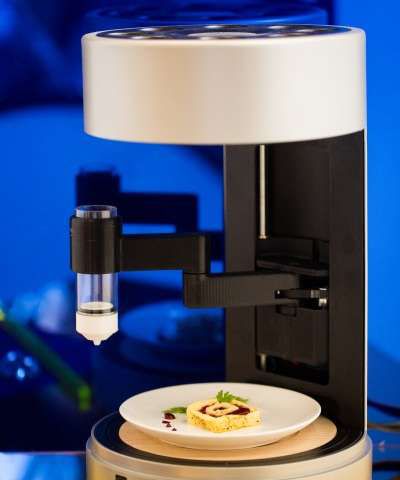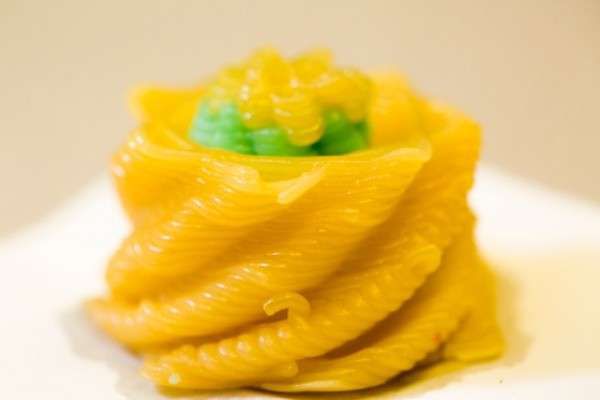Scientists from the University of Columbia have developed a 3D food printer. This 3D food printer can formulate edible items through computer software and the actual cooking of edible pastes, gels, powders, and liquid ingredients. This is exactly similar to a stylish coffee machine.
Hod Lipson, Mechanical Engineering Professor said, “Food printers are not meant to replace conventional cooking—they won’t solve all of our nutritional needs, nor cook everything we should eat. But they will produce an infinite variety of customized fresh, nutritional foods on demand, transforming digital recipes and basic ingredients supplied in frozen cartridges into healthy dishes that can supplement our daily intake. I think this is the missing link that will bring the benefits of personalized data-driven health to our kitchen tables—it’s the ‘killer app’ of 3-D printing.”
Scientists are continuously working to get the prototype up and running. The main challenge is to get the printer to cook food. They are sure that they can get the technology to work this summer. It consists of a robotic arm, which has eight slots for frozen food cylinders. Now, Lipson’s student are working on combining an infrared heating element into the arm.

Researchers got the idea from printing biomaterials. According to scientists, it is very exciting. Lipson said, “It touches on something that’s very basic to our lives. We’ve been cooking forever, but if you think about it, while technology and software have wormed their way into almost every aspect of our lives. Cooking is still very, very primitive, we still cook over an open flame, like our ancestors millennia ago. So this is one area where software has not yet permeated. And when software touches something, it takes off.”
Except kitchen, Lipson, and his team made a new type of foods. They have developed novel textures, combinations, and structural arrangements of basic ingredients that chefs cannot currently put together.
The team then turn to the kitchen experts to face the creative question of what can be made by using 3D printing. They found it very exciting to create dishes with software. Through software, they are able to see the drawing ahead of time, to see what’s going to happen, to make interesting shapes and geometries.

Now researchers have the aim to develop their printing more fast and precise. Their 3D food printer is able to cook different ingredients at different temperatures and a different duration. Those all are controlled by the software they are using. The software is quite difficult like the 3-D printer they have been experimenting. Normally, it is used to design and print machine parts, holes, screws, notches, cuts, and bends, not your next meal.
“This is the wrong language for food. If we want to layer, coat, sprinkle, mix, then we need a new language. Through the language, we can describe what we want to the printer. And it has to be easy for someone who’s not an engineer to create a digital recipe”,he explains.
The 3D printing food offers revolutionary new options for convenience and customization, from controlling nutrition to managing dietary needs to saving energy and transport costs to creating new and novel food items. According to scientists, it is like output device for data-driven nutrition and personal health.
Also Read: The Future Is Now: 5 Ways 3D Printing Is Changing the World
Lipson is especially excited about working with the ICC chefs and plans to continue the collaboration. “We’ve already seen that putting our technology into the hands of chefs has enabled them to create all kinds of things that we’ve never seen before, that we’ve never tried. This is just a glimpse of the future and what lies ahead.”
The research was done by Lipson and his team is collaborating with New York City-based International Culinary Center (ICC), a top culinary school in the U.S. Lipson also took several workshops to bring together ICC’s culinary creativity with the CML’s technical knowledge to create new kinds of foods.